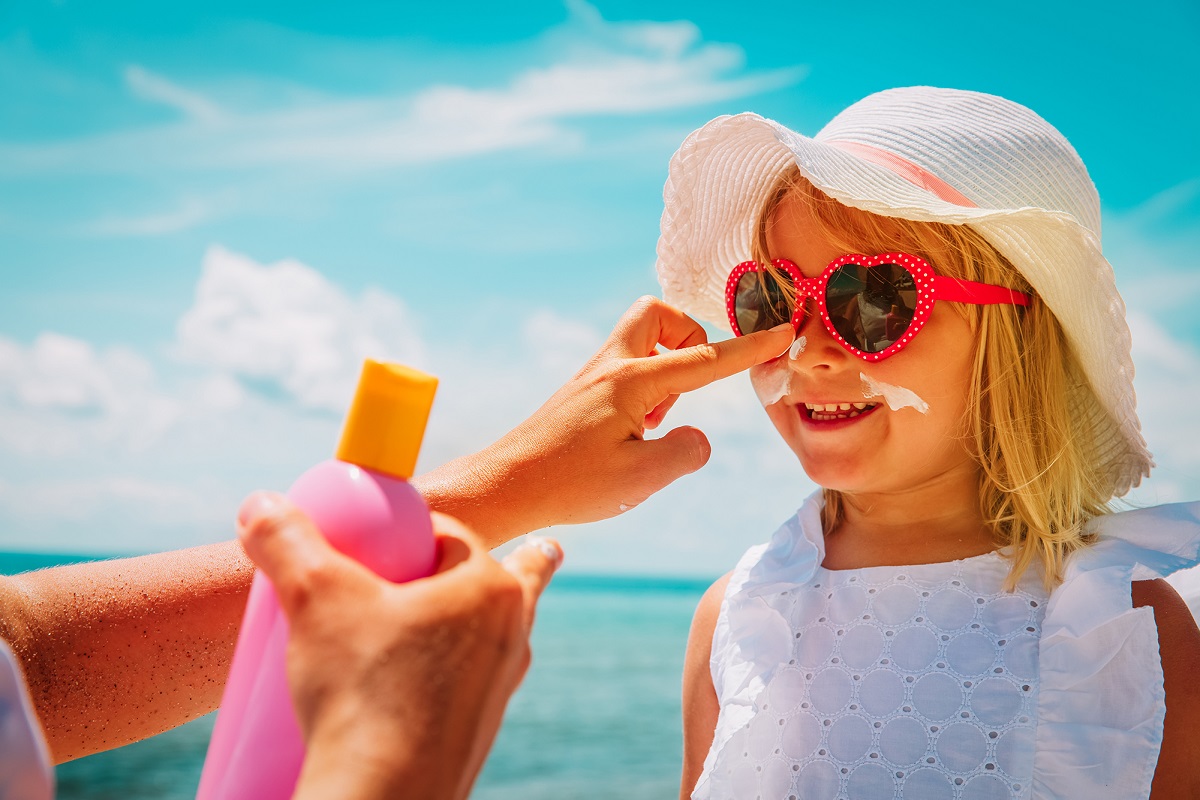
20 Dec Simple guide to sun protection this summer!
Pursuing the perfect tan might seem like a great idea when we are in our 20s, but as we get older, the perfect tan and unprotected sun exposure can take a toll on our skin. We must learn how to take care of it every day to ensure glowing, more youthful-looking skin throughout the years. When it comes to protecting your body from the sun, it’s important to understand why sun protection is a must, regardless of your age or the time of the year.
To protect your skin, you need to be conscientious of the damaging UVA and UVB rays of the sun. We often see these acronyms on our skin care products, cosmetics and clothing, but do you know what they mean?
• SPF = Sun Protection Factor
• UVA = Ultra Violet A (long wave)
• UVB = Ultra Violet B (short wave)
UVA and UVB are two very different types of radiation that can damage your skin.
UVA rays are responsible for skin aging and wrinkling and can contribute to skin cancer. Because UVA rays pass easily through the ozone layer, they make up the majority of sun exposure. UVA rays can pass through clouds, glass and even some clothing. You might not be able to feel them, but they will affect your skin.
UVB rays are responsible for sunburns and cataracts, and they can affect the immune system. Most importantly, UVB rays also contribute to skin cancer. Sun Protection Factor (SPF) found in our sunscreen products gives you an idea of how long you can stay in the sun before your skin starts to get red. SPF products come in various levels, including SPF 15, SPF 30, SPF 50 and more.
Here’s how they work: let’s say that your skin will start to redden when exposed to the sun in just 10 minutes. You would take that 10 minutes and multiply it by the SPF number you’re using. For example, if you’re using an SPF 30 product:– 10 minutes x 30 (SPF) = 300 minutes
If you’re at the beach or in direct sunshine for extended periods, always be cautious with sunscreen and your chosen sun protection factor. It’s important to not have a false sense of security when it comes to your sunscreen. Many products are not water-resistant, so you wouldn’t be able to rely on five hours of protection if you’re swimming or exercising.
Also, most sunscreens are intended for normal, everyday sun exposure, not a full day in direct sun. At the beach or while exercising in the sun, you should consider a stronger sunscreen than usual. And as always: Apply and reapply.
Top 10 Sunscreen Tips
• Always apply sunscreen, whatever the season
• When purchasing sunscreen products, always look for “broad spectrum protection” on the label to ensure you are protected against both UVA and UVB rays
• The proper amount of sunscreen for your body is about 1 oz. (or 30ml), which is just enough to fill a shot glass. You need a teaspoon (5 grams) of sunscreen just for your face.
• Apply sunscreen at least 15 to 20 minutes before going into the sun. If your skin is already red from the sun, the damage has already started.
• It’s important to protect every exposed area of the skin, including your ears and any bald spots, and wear protective clothing such as long-sleeved shirts, long pants and wide-brimmed hats.
• Wear sunglasses that provide UVA and UVB protection. Not only can your eyelids burn, but exposure to UVB rays can lead to cataracts.
• Don’t think you’re protected in your car or looking out a window. The sun’s rays can penetrate glass, so protect yourself even if you’re not in direct sunlight.
• Make a habit of reapplying sunscreen every two hours, or after swimming or excessive sweating
• Stay out of the sun during the hottest hours of the day and seek the shade as much as possible
• If you simply have to have a tan, use self-tanner. (But remember to wear sunscreen, too.). Unprotected sun exposure is the leading culprit in skin aging and skin cancer. We must protect ourselves each and every day – while looking fabulous, of course.


